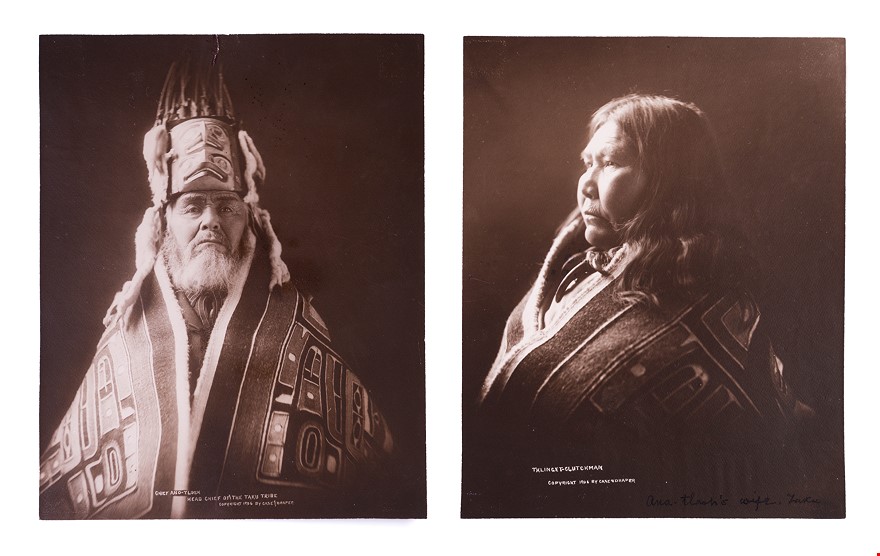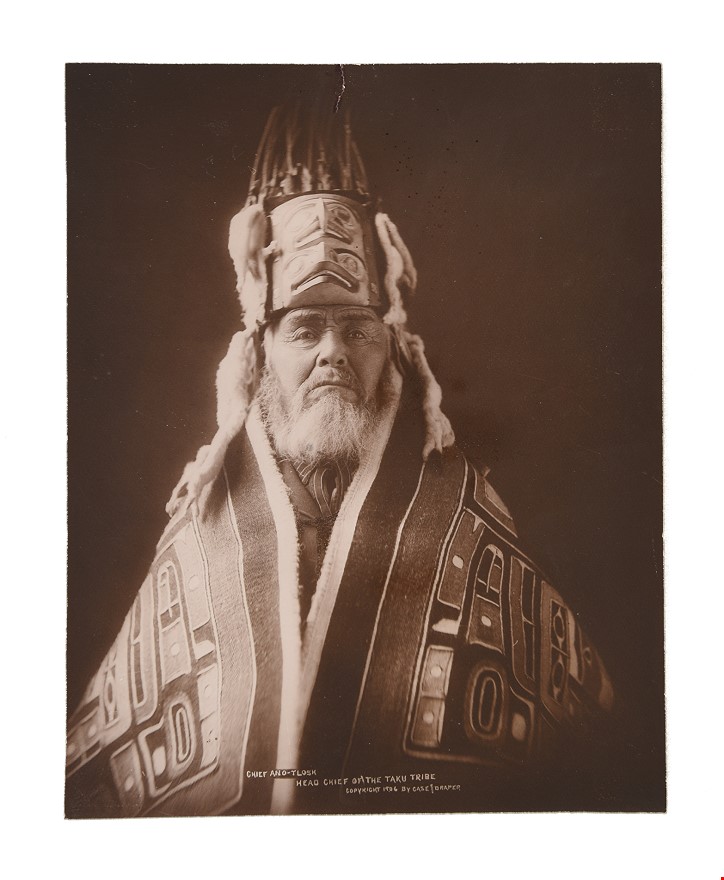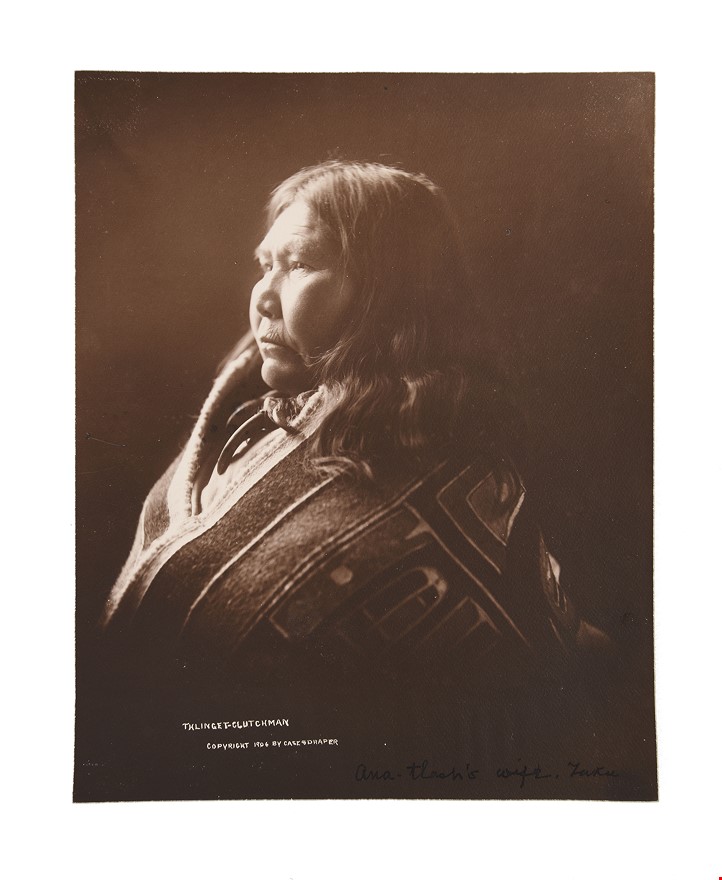Chief Ano-Tlosh Head Chief of the Taku Tribe [and] Tlinget-Clutchman.
ALASKA, ; CASE & DRAPER. Photographers (1906.)
£550.00
Available to view at our Curzon Street shop.
TWO STATELY TLINGIT PORTRAITS
Two silver gelatin photographic prints, matte finish, measuring 240 by 187mm. Both signed in negative, the second with additional neat contemporary ink annotation "Ana-tlash's wife. Taku." Ano Tlosh with small 17mm closed tear to top edge of image, touched up with sepia ink. Else very good. Juneau, Case & Draper,
Two fine portraits of a Tlingit chief and his wife, taken in Alaska by a frontier photography outfit.
William Howard Case and Horace H. Draper both arrived in Skagway in 1898 on the trail of the Klondike Gold Rush. Initially operating from a tent, they went into business together, and were enlisted by the White Pass and Yukon Route companies to produce a suite of images detailing the region along their new railway lines. The resultant fine photographs showcased the natural beauty of the landscape, the mines and industries of the area, and the Indigenous people of this part of Alaska.
This pair of portraits are of important members of the Taku branch of the Tlingit people. Chief Ano-Tlosh (also recorded as Anotklosh) is shown in half length, wearing a carved wooden headdress bearing two faces, with a crown of whiskers or baleen above, and ermine trim. He is wrapped in an ornate Chiklat blanket, customarily woven from cedar bark and mountain goat wool, decorated with traditional Tlingit ovoid pattern forms. These elaborate blankets were highly labour intensive to create, and thus were symbols of status within Indigenous Alaskan society. The second portrait, captioned "Thlinget-Clutchman" depicts a woman in three-quarter profile, also half length, her hair worn loose. She is wearing the same blanket as in the portrait of her male counterpart, and the contemporary ink annotation identifies her as "Ana-tlash's wife".
Case and Draper expanded from their mobile tent to a photographic studio branch in Juneau in 1905, ultimately stocking Native crafts, natural history specimens, curios and photographic supplies alongside their own pictures and postcards. Such 'trading post' style establishments were in vogue at the time, with Native crafts attracting the interest of not only anthropologically minded collectors, but also tapping into an emerging notion of interior design and modernity. The minimalistic studio staging of these portraits, photographed as stand alone subjects rather than Native people embedded in an environment, is indicative of this move.
Case and Draper parted ways in 1907, though W. H. Case remained in Alaska operating the studio on his own. He would photograph Chief Anotklosh at least once more, in 1913.
Stock Code: 242784






